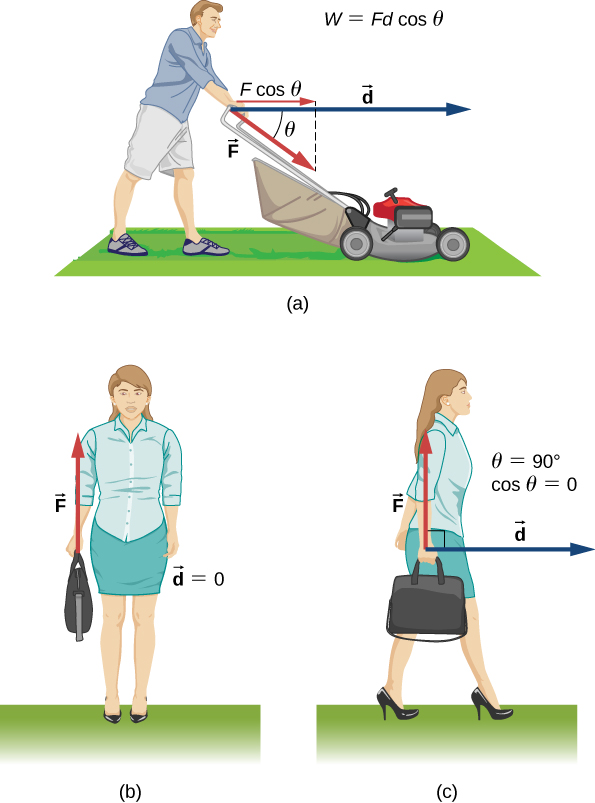| << Chapter < Page | Chapter >> Page > |
The simplest work to evaluate is that done by a force that is constant in magnitude and direction. In this case, we can factor out the force; the remaining integral is just the total displacement, which only depends on the end points A and B , but not on the path between them:
We can also see this by writing out [link] in Cartesian coordinates and using the fact that the components of the force are constant:
[link] (a) shows a person exerting a constant force along the handle of a lawn mower, which makes an angle with the horizontal. The horizontal displacement of the lawn mower, over which the force acts, is The work done on the lawn mower is , which the figure also illustrates as the horizontal component of the force times the magnitude of the displacement.

[link] (b) shows a person holding a briefcase. The person must exert an upward force, equal in magnitude to the weight of the briefcase, but this force does no work, because the displacement over which it acts is zero. So why do you eventually feel tired just holding the briefcase, if you’re not doing any work on it? The answer is that muscle fibers in your arm are contracting and doing work inside your arm, even though the force your muscles exert externally on the briefcase doesn’t do any work on it. (Part of the force you exert could also be tension in the bones and ligaments of your arm, but other muscles in your body would be doing work to maintain the position of your arm.)
In [link] (c), where the person in (b) is walking horizontally with constant speed, the work done by the person on the briefcase is still zero, but now because the angle between the force exerted and the displacement is ( perpendicular to ) and .
Substituting the known values gives

Notification Switch
Would you like to follow the 'University physics volume 1' conversation and receive update notifications?